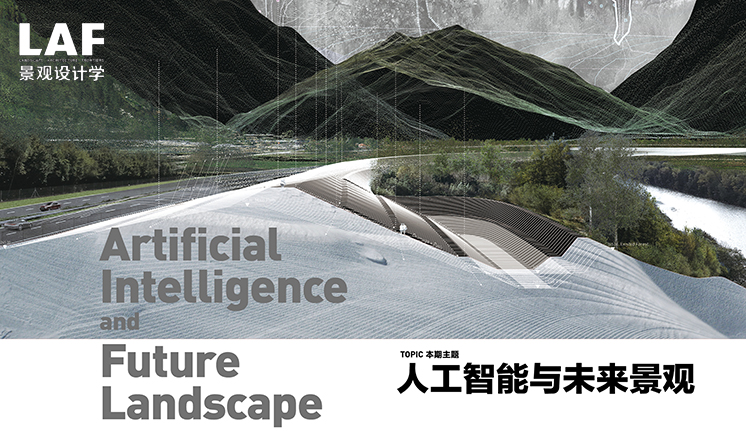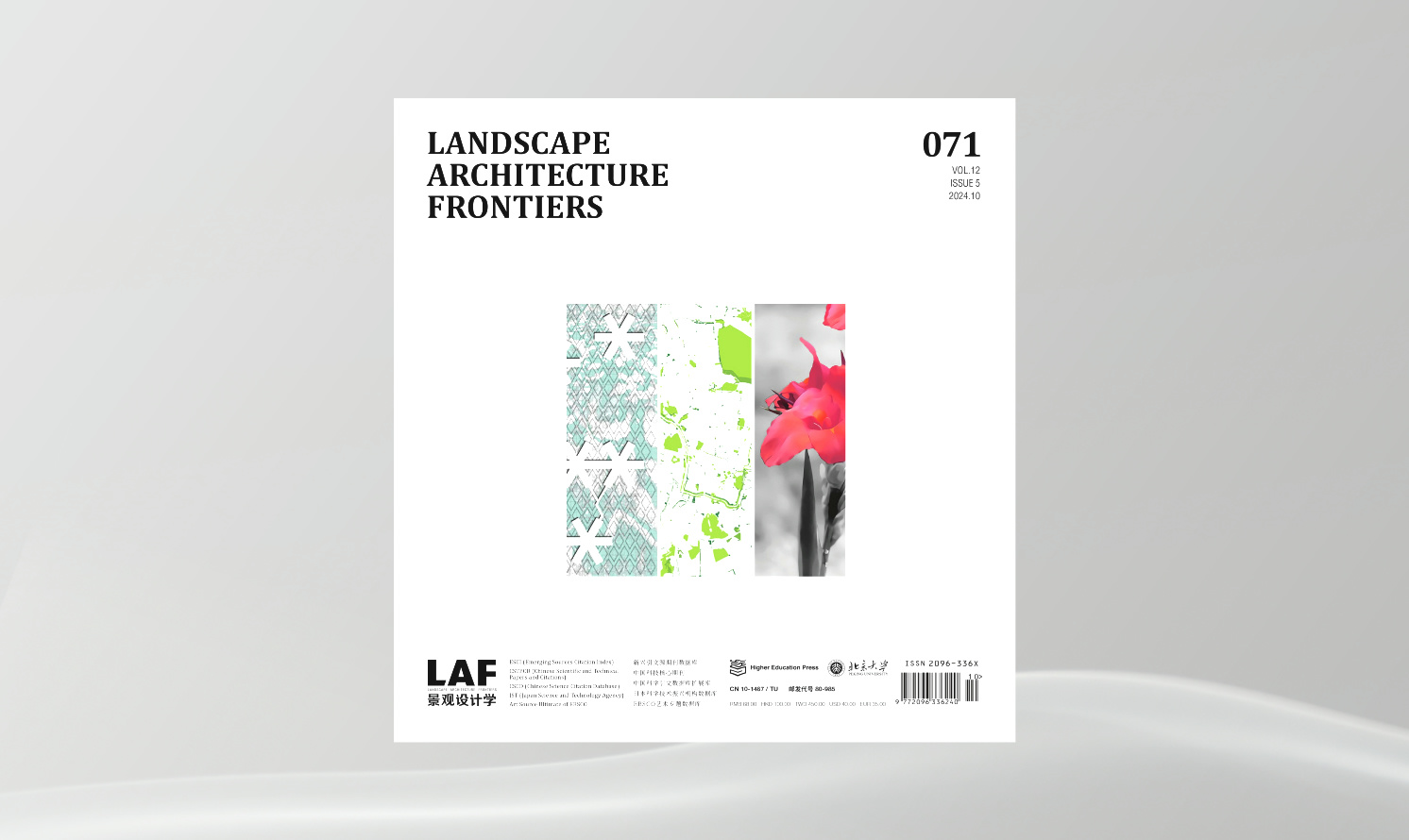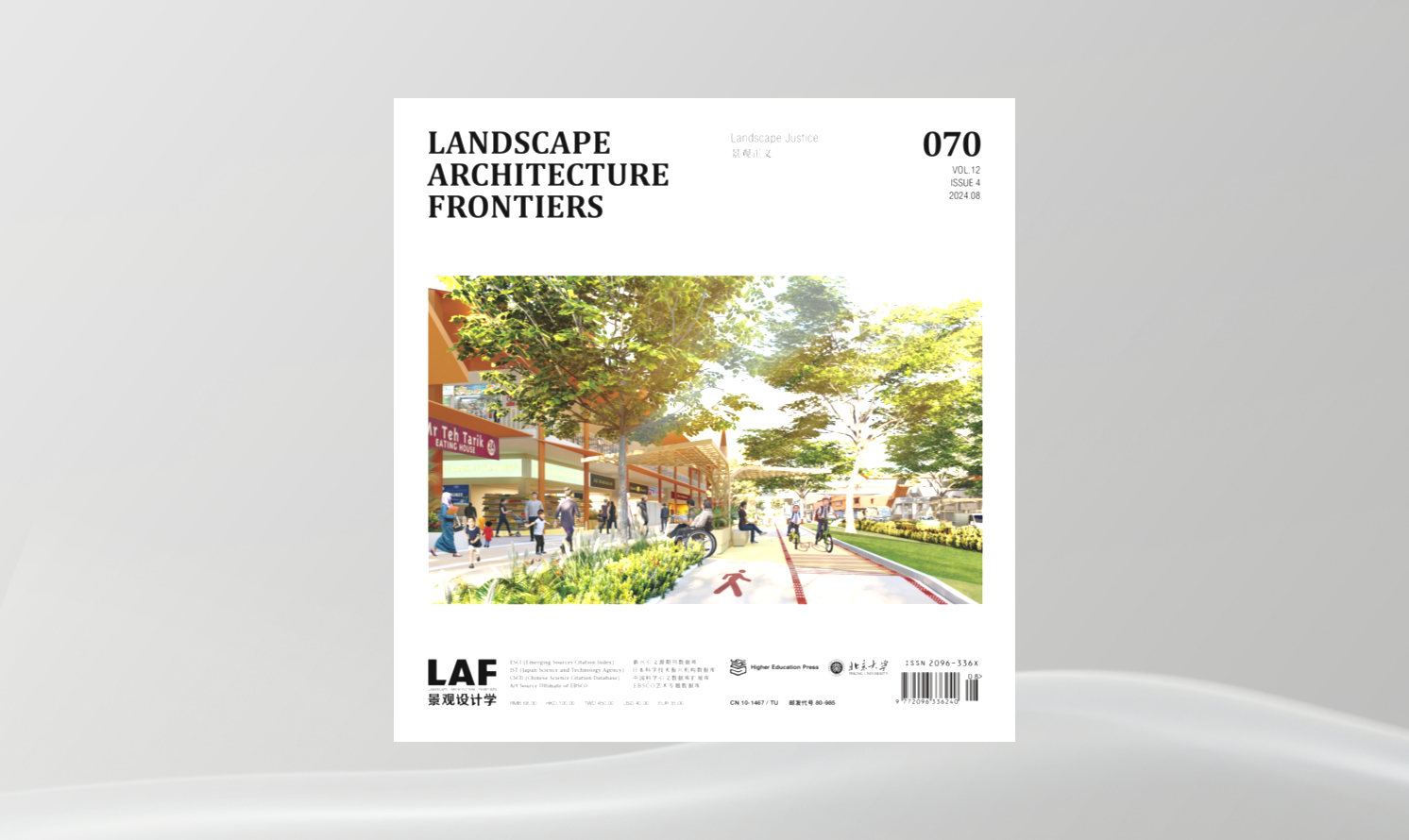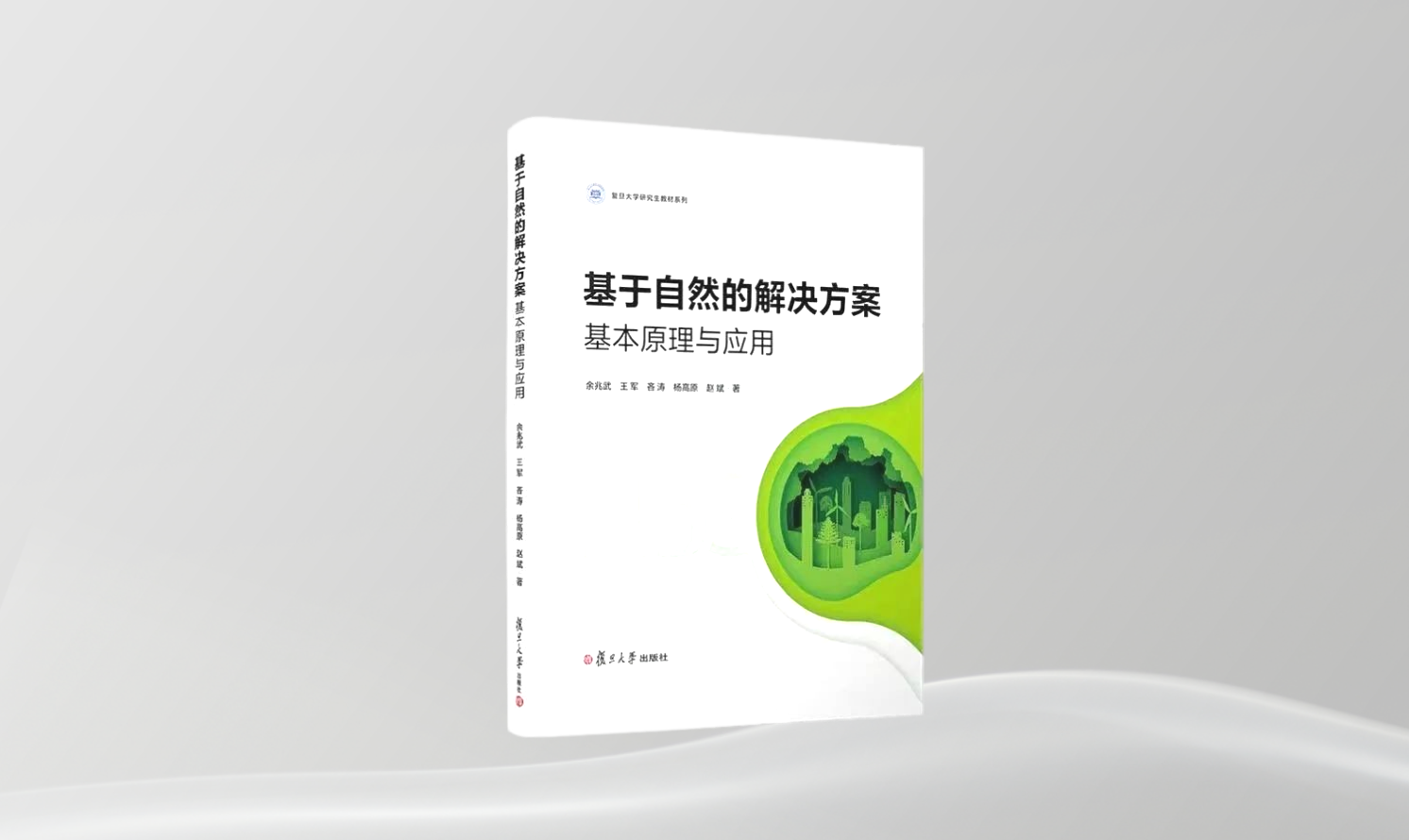人工智能時(shí)代的設(shè)計(jì)
Design in the Age of Artificial Intelligence
作者:尼爾·林奇 Neil LEACH
摘要
人工智能在我們的生活中扮演著越來(lái)越重要的角色����,但它會(huì)對(duì)設(shè)計(jì)專業(yè)帶來(lái)何種影響?它會(huì)形成一種新的設(shè)計(jì)風(fēng)格嗎���?或者��,人工智能僅能輔助設(shè)計(jì)�,還是會(huì)顛覆設(shè)計(jì)���?通過(guò)定義不同形式的人工智能并展示三位設(shè)計(jì)師及團(tuán)隊(duì)的相關(guān)設(shè)計(jì)成果�����,本文試圖對(duì)人工智能的潛力發(fā)起討論�。作者認(rèn)為�����,人工智能不會(huì)創(chuàng)造新的設(shè)計(jì)風(fēng)格�;但其對(duì)設(shè)計(jì)過(guò)程影響深遠(yuǎn)。這或許將迫使我們反思許多廣為設(shè)計(jì)界所接受的真理信條���。某些傳統(tǒng)術(shù)語(yǔ)(例如��,“設(shè)計(jì)”這一概念以及對(duì)于“設(shè)計(jì)”這一行為的認(rèn)識(shí))可能會(huì)被“搜索”和“結(jié)果”等一批新術(shù)語(yǔ)所取代�。更重要的是�����,對(duì)于“藝術(shù)天賦”的迷思可能也會(huì)被打破�����。本文并非意在指出人工智能強(qiáng)烈的“人工性”�,而是旨在點(diǎn)明我們對(duì)人類智能的理解已深陷誤區(qū)。
關(guān)鍵詞
人工智能�;人類智能;功能可見性���;搜索����;結(jié)果�;藝術(shù)天賦
Abstract
Artificial Intelligence is playing an ever-increasing role in our lives, but what impacts might it have on the design professions? Will it introduce a new style? Or will it just help to improve the design process? Or will it have a completely different impact? This article attempts to offer an overview of the potential of Artificial Intelligence, defining the different forms of Artificial Intelligence, and illustrating its argument with the work of three designers. It argues that Artificial Intelligence will not generate a new style. However, it will have a radical input on the process of designing. It is also likely to force us to call into question many accepted beliefs within the design community. Certain traditional terms, such as the concept of a “design” and the very notion of “designing,” are likely to be replaced by a new lexicon that includes terms such as “searching” and “outcomes.” But, more importantly, the whole myth of the “artistic genius” is likely to be also called into question. What Artificial Intelligence tells us, as the paper concludes, is not how “artificial” Artificial Intelligence is, but rather how misguided our own understanding of human intelligence has been.
Key words
Artificial Intelligence; Human Intelligence; Affordances; Searching; Outcomes; Artistic Genius
基于街道圖像與深度學(xué)習(xí)的城市景觀研究
Using Street-Level Images and Deep Learning for Urban Landscape Studies
作者:李小江,蔡洋�����,卡洛·拉蒂 Xiaojiang LI, Bill Yang CAI, Carlo RATTI
摘要
城市街道不僅是人類活動(dòng)的集聚地,也是居民與城市建成環(huán)境發(fā)生社會(huì)交互的主要界面�。因此,加深對(duì)于城市街道景觀的了解在城市研究工作中至關(guān)重要�。街道圖像獲取性的大大提高為城市景觀研究提供了新的機(jī)遇,也提高了街道景觀研究與分析的準(zhǔn)確性與多樣性�。本研究基于街道圖像,呈現(xiàn)了新近研發(fā)的深度卷積神經(jīng)網(wǎng)絡(luò)在景觀分析中的應(yīng)用��。利用經(jīng)過(guò)訓(xùn)練的深度卷積神經(jīng)網(wǎng)絡(luò)模型��,我們能夠準(zhǔn)確地從街道圖像中識(shí)別出不同的城市特征��。根據(jù)圖像分割技術(shù)處理結(jié)果����,我們進(jìn)一步測(cè)算出了馬薩諸塞州劍橋市的街道綠化空間分布情況,并對(duì)街谷開闊程度進(jìn)行了量化分析����。諸如上述人工智能與大規(guī)模采集的街道圖像的結(jié)合,將為世界范圍內(nèi)的城市景觀研究提供全新的視角��。
關(guān)鍵詞
卷積神經(jīng)網(wǎng)絡(luò)���;城市街道����;人工智能;機(jī)器學(xué)習(xí)����;圖像分割
Abstract
Streets are a focal point of human activities and a major interface of the social interaction between urban dwellers and urban built environment. A better understanding of the urban landscapes along streets is thus important in urban studies. The increasing availability of street-level images provides new opportunities for urban landscape studies to study and analyze streetscapes at a fine level and from a different perspective. In this study, we presented an application of a recently developed Deep Convolutional Neural Network on landscape analysis based on street-level images. Different urban features were identified from street-level images accurately using a trained Deep Convolutional Neural Network model. Based on the image segmentation results, we further measured the spatial distribution of the street greenery and quantitatively analyzed the openness of street canyons in Cambridge, Massachusetts. The proposed combination of Artificial Intelligence and the massively collected street-level images provides a new sight for urban landscape studies for cities around the world.
Key words
Convolutional Neural Network; Urban Street; Artificial Intelligence; Machine Learning; Image Segmentation
基于智能交互的景觀體驗(yàn)增強(qiáng)設(shè)計(jì)
Application of Intelligent-Interaction-Based Landscape Experience Augmentation
作者:曹靜����,何汀瀅,陳箏 Jing CAO, Tingying HE, Zheng CHEN
摘要
自20世紀(jì)90年代中后期起���,人工智能和可穿戴交互技術(shù)不斷革新我們和環(huán)境交互的方式�,而在未來(lái)��,這種影響將會(huì)愈加深遠(yuǎn)�����??纱┐髟O(shè)備和移動(dòng)終端主要從感知、理解和控制三個(gè)方面增強(qiáng)人對(duì)于環(huán)境空間的體驗(yàn)�����。本文圍繞智能感官增強(qiáng)、智能認(rèn)知增強(qiáng)�����,以及智能反饋增強(qiáng)三個(gè)方面��,介紹了美國(guó)華盛頓紀(jì)念碑現(xiàn)場(chǎng)增強(qiáng)音樂(lè)項(xiàng)目�����、由麻省理工學(xué)院媒體實(shí)驗(yàn)室城市科學(xué)研究團(tuán)隊(duì)的學(xué)者為非專業(yè)用戶提供智能決策輔助的“城市視景”項(xiàng)目�����,以及基于地理位置服務(wù)的“自然控”自然社區(qū)營(yíng)造實(shí)景增強(qiáng)現(xiàn)實(shí)游戲應(yīng)用程序設(shè)計(jì)等若干創(chuàng)新研究和實(shí)踐探索�,并展望了未來(lái)智能交互背景下空間環(huán)境規(guī)劃設(shè)計(jì)領(lǐng)域可能面臨的機(jī)遇和挑戰(zhàn)。
關(guān)鍵詞
智能交互景觀��;可穿戴設(shè)備��;體驗(yàn)增強(qiáng)��;增強(qiáng)現(xiàn)實(shí)
Abstract
Since the mid- to late 1990s, both Artificial Intelligence and wearable interaction techniques have dramatically changed the way how humans interact with the exterior environment, as such influence will be greater and greater over time. Wearable devices and mobile terminals have enhanced humans’ experience on spatial environment by improving their perception, understanding, and ability of control towards certain places. This paper centers on the advanced efforts of the augmentation technologies in intelligent sensing, cognition, and feedback, by introducing several innovative applications, including 1) the live-audio augmented project for the Washington Monument; 2) the CityScope project, developed by the MIT City Science Lab, which provides intelligent decision-making aid for non-professional users; and 3) Nature-X, an augmented reality application that creates nature community scenes based on Location Based Service. All these studied cases of spatial and environmental planning and design look into the future opportunities and challenges in the context of intelligent interaction.
Key words
Intelligent Interactive Landscape; Wearable Device; Experience Augmentation; Augmented Reality
第三類智能
A Third Intelligence
作者:耿百利����,張子豪 Bradley CANTRELL, Zihao ZHANG
摘要
將人工智能應(yīng)用于景觀設(shè)計(jì)學(xué)科所面臨的首要挑戰(zhàn)在于當(dāng)前人工智能的定義不適用于系統(tǒng)性的景觀框架����。一般的人工智能定義不關(guān)注復(fù)雜的生態(tài)關(guān)系�,而是傾向于強(qiáng)調(diào)個(gè)體智能,忽視了人類和非人類智能體相結(jié)合而產(chǎn)生的智能��。我們認(rèn)為����,在將人工智能充分應(yīng)用于景觀設(shè)計(jì)領(lǐng)域之前���,針對(duì)景觀設(shè)計(jì)學(xué)科制定一個(gè)切實(shí)的“智能”的定義非常必要�。我們采用智能體-環(huán)境框架來(lái)定義景觀中的智能��,并認(rèn)為這一定義必須具體而明晰:在探討智能時(shí)�����,明確智能體��、環(huán)境和首要目標(biāo)是十分必要的��。從智能的角度來(lái)看�,設(shè)計(jì)師通過(guò)精心設(shè)計(jì)分布在環(huán)境中的各種智能體來(lái)創(chuàng)造景觀��。而在將人工智能引入景觀設(shè)計(jì)學(xué)科的過(guò)程中��,我們提出了與人類及非人類智能體共同演進(jìn)的“第三類智能”����。而這些智能形式間的相互作用與對(duì)話也將為景觀設(shè)計(jì)學(xué)科帶來(lái)新的機(jī)遇��。
關(guān)鍵詞
人工智能�����;景觀設(shè)計(jì)學(xué)��;智能體-環(huán)境框架����;廣義智能;第三類智能
Abstract
The fundamental challenge in the application of Artificial Intelligence to the discipline of Landscape Architecture is that current definitions of Artificial Intelligence do not fit within systemic landscape frameworks. Rather than focusing on complex ecological relationships, general definitions of Artificial Intelligence tend to emphasize the intelligence of individual entities and overlook the emergent intelligence of assemblages of human and non-human agents. We argue that it is important to develop a working definition of “intelligence” specific to Landscape Architecture before seriously considering the fruitful use of Artificial Intelligence in the production of environments. We adopt the agent-environment framework for defining intelligence in the context of landscape and assert that the definition has to be specific and situated: when discussing intelligence, it is necessary to clarify the agents, the environments, and the overarching goals. Taking intelligence as a lens, designers choreograph the intelligence distributed among human and non-human agents in the environment to produce landscapes. Introducing Artificial Intelligence to Landscape Architecture proposes a “third intelligence,” co-evolving with human and non-human actors. For Landscape Architecture, opportunity lies in the interactions and dialogues between these forms of intelligence.
Key words
Artificial Intelligence; Landscape Architecture; Agent-Environment Framework; Universal Intelligence; Third Intelligence
人工智能對(duì)設(shè)計(jì)的影響
The Impacts of Artificial Intelligence on Design
作者:劉瑜 Yu LIU
摘要
本次訪談圍繞人工智能及其可能的設(shè)計(jì)應(yīng)用展開�。受訪人劉瑜深入淺出地闡述了數(shù)據(jù)在人工智能領(lǐng)域的作用以及深度學(xué)習(xí)的邊界問(wèn)題,并就人工智能在現(xiàn)階段能夠發(fā)揮的輔助設(shè)計(jì)功能及其未來(lái)發(fā)展趨勢(shì)進(jìn)行了探討����。劉瑜認(rèn)為,通過(guò)深度學(xué)習(xí),人工智能在相對(duì)封閉的領(lǐng)域內(nèi)表現(xiàn)出色���,但相比人類充滿創(chuàng)造力和倫理性的開放式思維�����,它仍存在局限�,特別是在介于感性和理性之間的設(shè)計(jì)領(lǐng)域�,它無(wú)法取代人類設(shè)計(jì)師進(jìn)行設(shè)計(jì)。盡管如此�,設(shè)計(jì)師可以把一些常規(guī)的基礎(chǔ)性工作交由人工智能去完成,從而在設(shè)計(jì)創(chuàng)新和用戶溝通上投入更多精力����。
關(guān)鍵詞
人工智能���;數(shù)據(jù)��;深度學(xué)習(xí)����;設(shè)計(jì)��;黑箱;白箱
Abstract
This interview centers on Artificial Intelligence and its possible applications in design fields. Yu Liu, the interviewee, explains the role of data in Artificial Intelligence, the boundary for Deep Learning, Artificial Intelligence’s function to aid design, and its future development. Liu also discusses how Artificial Intelligence can work within some particular fields, and the creative and ethical limits of Artificial Intelligence, especially in the design fields, which are between sensibility and rationality. Besides, he explains why Artificial Intelligence cannot take the place of human designers. In spite of this, Artificial Intelligence can be used to do repetitive or routine tasks so that designers can put more focus on design innovation and user experience optimization.
Key words
Artificial Intelligence; Data; Deep Learning; Design; Black Box; White Box
設(shè)計(jì)視角下人工智能的定義��、應(yīng)用及影響
Definition, Application and Influence of Artificial Intelligence on Design Industries
作者:蔡凌豪�,范凌,賴文波��,龍瀛�����,王鵬�,辛向陽(yáng), Linghao CAI, Ling FAN, Wenbo LAI, Ying LONG, Peng WANG, Xiangyang XIN
摘要
“人工智能”的出現(xiàn)大幅提升了人們的生產(chǎn)及生活效率�,但與此同時(shí),人類自身的就業(yè)環(huán)境也深受影響����。那么,對(duì)于設(shè)計(jì)行業(yè)而言�,人工智能又將帶來(lái)怎樣的挑戰(zhàn)與機(jī)遇?由此����,《景觀設(shè)計(jì)學(xué)》邀請(qǐng)了6位來(lái)自建筑設(shè)計(jì)、城市規(guī)劃����、景觀設(shè)計(jì)��、工業(yè)設(shè)計(jì)等不同學(xué)科的學(xué)者�����、設(shè)計(jì)師�����,分別回答了什么是人工智能����、人工智能可能對(duì)設(shè)計(jì)師的工作產(chǎn)生何種影響��,以及人工智能會(huì)創(chuàng)造什么樣的生活方式三個(gè)問(wèn)題�����。多數(shù)受訪者認(rèn)為�����,當(dāng)前的人工智能并非真正意義上的人工智能���,其不具備自我意識(shí)����,亦無(wú)法完成創(chuàng)造性行為����。而在參與設(shè)計(jì)工作時(shí),人工智能雖然可以大幅減少設(shè)計(jì)師的程序性勞動(dòng)����,但由于其采用的是權(quán)重疊加和“去少存多”的數(shù)據(jù)處理方式,運(yùn)算結(jié)果缺乏倫理性和價(jià)值評(píng)判�����,因而還遠(yuǎn)遠(yuǎn)無(wú)法勝任創(chuàng)造性工作��。而在未來(lái)���,人工智能無(wú)疑會(huì)對(duì)人類的生活方式產(chǎn)生巨大影響�,甚至遠(yuǎn)超出我們的想象���。
關(guān)鍵詞
人工智能�����;設(shè)計(jì)�����;機(jī)器�����;數(shù)據(jù)
Abstract
Artificial Intelligence significantly promotes humans’ production efficiency and facilitates our daily life. Meanwhile, the climate of people’s employment is also under great impact. Through a group interview with six scholars and designers from the fields of Architecture, Urban Planning, Landscape Architecture, and Industrial Design, Landscape Architecture Frontiers attempts to provoke public attention on the challenges and opportunities (would be) brought by Artificial Intelligence by asking three questions: What is Artificial Intelligence? How would it influence designers’ working process and final results? And, what lifestyles would we have in the future under the influence of Artificial Intelligence? Most interviewees agree that, though Artificial Intelligence has largely helped us lessen workload on repetitive or routine tasks, nowadays it can neither be intelligent enough to have self-consciousness or perform creative jobs, nor offer ethical solutions or value judgments, because it is operated under weighted computing which is programmed by the majority rule. However, all the interviewees believe that Artificial Intelligence will make a big change on people’s future lifestyles, far beyond our imagination.
Key words
Artificial Intelligence; Design; Machine; Data
機(jī)器人自動(dòng)化建造的景觀—自然����、運(yùn)算,以及自動(dòng)化地形建模中的設(shè)計(jì)空間
Robotic Landscapes— Nature, Computation, and the Design Space of Autonomous Terrain Modeling
作者:克里斯托弗·吉魯特���,伊爾瑪·赫爾克斯肯斯 Christophe GIROT, Ilmar HURKXKENS
摘要
2017年秋����,蘇黎世聯(lián)邦理工學(xué)院與瑞士國(guó)家科研能力中心數(shù)字化制造小組就瑞士提契諾州坎頓地區(qū)的一條高速公路進(jìn)行了實(shí)驗(yàn)性設(shè)計(jì)���。該項(xiàng)目展示了一系列運(yùn)用計(jì)算機(jī)程序和機(jī)器人原理研發(fā)的設(shè)計(jì),基于覆蓋整個(gè)提契諾河谷的激光雷達(dá)點(diǎn)云數(shù)據(jù)集的景觀模型為項(xiàng)目中所有的地形塑造提供了基礎(chǔ)���。經(jīng)過(guò)歷時(shí)15周的探索后���,項(xiàng)目獲得了可喜的成果���,同時(shí)展現(xiàn)出了一種通過(guò)機(jī)器人自動(dòng)化設(shè)計(jì)來(lái)構(gòu)思景觀的新途徑。
關(guān)鍵詞
機(jī)器人自動(dòng)化建造的景觀�����;自動(dòng)化地形建模�����;點(diǎn)云數(shù)據(jù)集���;人類世
Abstract
An experimental studio on a highway site in Canton of Ticino in Switzerland held at the ETH in the fall of 2017 is the result of a collaborative project with the National Center of Competence in Research Digital Fabrication, ETH Zürich. The work shows a series of designs that were developed through procedural and robotic principles. The landscape models based on a Lidar point cloud data set of the entire Ticino Valley served as the basis of all terrain operations. The results obtained after a 15-week studio are encouraging and show the way towards a new way of conceiving landscapes through robotic design.
Key words
Robotic Landscape; Autonomous Terrain Modeling; Point Cloud Data Set; Anthropocene
基于全球性城市中地方社區(qū)的數(shù)據(jù)體驗(yàn)
The Data Experience of Local Neighborhoods in Global Cities
作者:克里斯蒂安·德里克斯��,露西·赫爾墨�����,法比奧·加里西亞��,亞歷山大·卡奇凱威 Christian DERIX, Lucy HELME, Fabio GALICIA, Alexander KACHKAEV
摘要
本文著重介紹了一款用于評(píng)估城市環(huán)境狀況的搜索引擎平臺(tái)—CIVITAS�。該平臺(tái)由伍茲貝格建筑設(shè)計(jì)事務(wù)所的SUPERSPACE團(tuán)隊(duì)設(shè)計(jì)和開發(fā),可幫助用戶判斷某處地域的宜居性或城市體驗(yàn)是否符合其預(yù)期或特殊要求�。基于空間特征����、空間連通性和土地利用密度三類指標(biāo),用戶可從大量的社會(huì)空間數(shù)據(jù)集中選取所需數(shù)據(jù)����,對(duì)整個(gè)城市或社區(qū)、建筑物甚至具體樓層進(jìn)行定制化分析�����。CIVITAS適用于不同的城市��,其內(nèi)部匯編了一套服務(wù)于各項(xiàng)城市指標(biāo)的數(shù)據(jù)庫(kù)��,并正在將越來(lái)越多的全球性城市納入其中�。本文呈現(xiàn)了利用此平臺(tái)在全球性城市的地方社區(qū)中所開展的研究。
關(guān)鍵詞
數(shù)據(jù)�����;CIVITAS搜索引擎��;宜居性��;可視化�;指標(biāo)
Abstract
This article introduces CIVITAS, a search engine for urban conditions designed and developed by SUPERSPACE of Woods Bagot to allow stakeholders to identify qualities of liveability and urban experiences that suit their tacit desires and explicit requirements. Large data sets of socio-spatial quantities are selectable to create bespoke analytics across scales from whole city to neighborhoods, buildings, and even floors based on three categories: spatial character, connectivity, and land-use densities. CIVITAS is applicable across cities and a database for urban metrics has been compiled in-house that contains an increasing number of global cities. This article showcases research into neighborhoods within global cities using the platform.
Key words
Data; CIVITAS Search Engine; Liveability; Visualization; Metrics
StreeTalk慢行導(dǎo)航系統(tǒng)
Streetalk: A Navigation System for Pedestrians and Cyclists
作者:劉瀏,張帆�����,周博磊����,王舟童,李穎欣 Liu LIU, Fan ZHANG, Bolei ZHOU, Zhoutong WANG, Yingxin LI
摘要
不同于當(dāng)前以出行效率為主要考量因素的傳統(tǒng)導(dǎo)航系統(tǒng)��,StreeTalk慢行導(dǎo)航系統(tǒng)更注重行人和騎行者的感受����,特別是對(duì)安全感和舒適度的需求。通過(guò)運(yùn)用物體檢測(cè)識(shí)別及場(chǎng)景語(yǔ)義分割等技術(shù)�����,城市街景的深度圖像特征被提取出來(lái)��。之后���,結(jié)合深度學(xué)習(xí)模型���,機(jī)器可以預(yù)判人類對(duì)周邊環(huán)境的感知�,并為數(shù)以千萬(wàn)計(jì)的街景照片評(píng)分�,從而建立起可以直觀顯示街道安全和舒適程度的導(dǎo)航系統(tǒng)。相關(guān)技術(shù)不僅可以提供定制化���、全方位的慢行導(dǎo)航服務(wù)��,為城市研究及決策����、城市景觀設(shè)計(jì)提供相關(guān)依據(jù)�,也為未來(lái)城市生活創(chuàng)造了更多可能。
關(guān)鍵詞
城市街道���;安全感與舒適度�;慢行導(dǎo)航系統(tǒng)�;深度學(xué)習(xí);物體檢測(cè)識(shí)別����;場(chǎng)景語(yǔ)義分割
Abstract
Different from the conventional efficiency-driven navigation systems, StreeTalk navigation system is developed for pedestrians and cyclists to optimize their travelling safety and comfort. Through the application of technologies including object detection and scene parsing, the characteristics of urban streetscapes can be extracted. By combining deep learning models, machines can imitate human’s perception and evaluate streetscapes automatically, and intuitively show users the street safety and comfort level of different commuting options. Relevant technologies can not only be applied in offering panorama navigation services for pedestrians and cyclists, but also better support urban research, inform decision-making and urban landscape design, and explore more possibilities for future urban life.
Key words
Urban Street; Safety and Comfort; Navigation System for Pedestrians and Cyclists; Deep Learning; Object Detection; Scene Parsing
基于空間句法模型的數(shù)據(jù)化城市設(shè)計(jì)—以吉林市朝陽(yáng)廣場(chǎng)設(shè)計(jì)為例
The Application of Space Syntax Modeling in Data-Based Urban Design— An Example of Chaoyang Square Renewal in Jilin City
作者:盛強(qiáng)��,周晨����,凱萬(wàn)·卡里米�,路安華���,邵敏 Qiang SHENG, Chen ZHOU, Kayvan KARIMI, Anhua LU, Min SHAO
摘要
空間句法是研究城市空間與社會(huì)經(jīng)濟(jì)活動(dòng)之間關(guān)系的一系列理論與技術(shù)�����,大數(shù)據(jù)時(shí)代便捷的數(shù)據(jù)獲取使得空間句法研究成果能夠快速應(yīng)用于數(shù)據(jù)分析與設(shè)計(jì)實(shí)踐�����。本文以吉林省吉林市軌道交通站點(diǎn)之一的朝陽(yáng)廣場(chǎng)為例����,通過(guò)應(yīng)用線段模型以及視域模型中的多智能體模擬工具��,對(duì)廣場(chǎng)內(nèi)部及周邊街道的交通流量和視域整合度進(jìn)行了分析����,并呈現(xiàn)了將分析結(jié)果應(yīng)用于廣場(chǎng)設(shè)計(jì)及方案評(píng)價(jià)的全過(guò)程��,以期提升廣場(chǎng)空間的使用率�;本文同時(shí)展望了機(jī)器學(xué)習(xí)和人工智能等新技術(shù)在推進(jìn)空間句法基礎(chǔ)研究和設(shè)計(jì)應(yīng)用方面的前景���。
關(guān)鍵詞
空間句法����;數(shù)據(jù)化設(shè)計(jì)��;多源數(shù)據(jù)��;交通流量���;視域整合度��;多智能體
Abstract
In the past decades, Space Syntax offers a series of theories and techniques to study the relationship between urban space and social-economic activities, and has been proved effective in analysis and design practices thanks to the open sources in the big data era. Taking the Chaoyang Square Renewal project in Jilin City, Jilin Province as an example, this article introduces the analyses of traffic volumes and visual integration of the square and the connected streets with modeling tools such as Segment Map and the intelligent multi-agent systems in Visibility Graph Analysis. All these analyses provided a basis for the full design process, from conceptual design to proposal evaluation, in order to activate this site through introducing pedestrian vitality. Prospects on new technologies in Artificial Intelligence, such as machine learning, are also explored to promote the research of Space Syntax and related application in urban design.
Key words
Space Syntax; Data-Based Design; Multi-Source Data; Traffic Flow; Visual Integration; Intelligent Multi-Agent System
“多些答復(fù)��,少些噱頭”—致“步道實(shí)驗(yàn)室”主持的多倫多更新項(xiàng)目
“More Buzzwords than Answers”— To Sidewalk Labs in Toronto
作者:瑪麗亞娜·瓦爾韋德�,亞歷山大·弗林 Mariana VALVERDE, Alexandra FLYNN
摘要
近來(lái)�����,各大主流媒體和技術(shù)相關(guān)領(lǐng)域爭(zhēng)相報(bào)道了美國(guó)基礎(chǔ)設(shè)施公司“步道實(shí)驗(yàn)室”將在加拿大首都多倫多建造一座新型高科技社區(qū)(即一項(xiàng)名為“步道多倫多”的項(xiàng)目)??偟膩?lái)說(shuō),國(guó)際評(píng)論界認(rèn)為���,在公眾對(duì)建造“智慧城市”項(xiàng)目看法不一的情況下�,政府將城市規(guī)劃的諸項(xiàng)決策權(quán)下放至一家以數(shù)據(jù)為主營(yíng)內(nèi)容的私營(yíng)企業(yè)的做法��,可謂是機(jī)遇與風(fēng)險(xiǎn)并存�����。
與大多數(shù)文章籠統(tǒng)談及智慧城市和技術(shù)導(dǎo)向型項(xiàng)目的視角不同��,本文旨在以“步道多倫多”項(xiàng)目為具體案例�,提出下列5個(gè)問(wèn)題:其一��,作為私企的步道實(shí)驗(yàn)室(其為互聯(lián)網(wǎng)巨鱷“谷歌”的姊妹公司)與推進(jìn)城市水岸振興的政府公共機(jī)構(gòu)“濱水多倫多”達(dá)成合作協(xié)議的過(guò)程缺乏透明度�����,且作為推動(dòng)項(xiàng)目進(jìn)行的公共合作方�����,濱水多倫多也未能向市民作出負(fù)責(zé)任的解釋說(shuō)明;其二���,步道實(shí)驗(yàn)室對(duì)于其將在哪些地塊開展更新項(xiàng)目的表述含混不清�����,使得公眾對(duì)該私營(yíng)技術(shù)公司并未足夠重視多倫多當(dāng)?shù)匾?guī)劃法規(guī)和房地產(chǎn)現(xiàn)狀的情況表示擔(dān)憂���;其三,作為一項(xiàng)由數(shù)據(jù)技術(shù)公司積極推進(jìn)的城市更新規(guī)劃項(xiàng)目����,人們不免懷疑掌控?cái)?shù)據(jù)信息才是步道實(shí)驗(yàn)室的真正意圖;其四���,這一案例呈現(xiàn)了城市更新項(xiàng)目中合同簽訂與開發(fā)權(quán)給予機(jī)制的相關(guān)問(wèn)題�����;最后�,正如文中所述���,盡管多倫多市議會(huì)仍未獲知步道實(shí)驗(yàn)室與濱水多倫多雙方所簽訂協(xié)議的內(nèi)容��,但已經(jīng)公布的該項(xiàng)目至今為止的推進(jìn)方式��,以及協(xié)議簽訂雙方發(fā)表的聲明���,已足以引發(fā)公眾對(duì)于企業(yè)和政府責(zé)任感的強(qiáng)烈質(zhì)疑��。
關(guān)鍵詞
公私合營(yíng)�����;專項(xiàng)機(jī)構(gòu)�����;透明度;擔(dān)責(zé)
Abstract
Many articles have appeared in mainstream media and in tech-oriented venues about Sidewalk Labs’ ideas for a new high-tech neighbourhood in Toronto (a project named Sidewalk Toronto). By and large, international commentary has focused on the opportunities and risks of giving over control over many city planning decisions to a private data-oriented corporation, with people lining up for or against “smart city” ideas, in general.
This article will set aside generalities about “smart cities” and technology, and instead pose a few questions about the particulars of Sidewalk Toronto project. The first question concerns the striking lack of transparency of the agreement between Sidewalk Labs (a Google sister company) and Waterfront Toronto, the public authority promoting the project, which is not directly accountable to the city or the citizens. The second question concerns the equally striking ambiguity about which parcel of land is being sought by Sidewalk Labs — an ambiguity that suggests a worrying lack of concern, on the tech company’s part, about both local planning law and local real estate realities. The third set of concerns is about the ownership of the data that appears to be Sidewalk Labs’ real interest. Fourthly, problems in the contract award and procurement mechanisms will be raised. Finally, even though the agreement has not yet been seen even by city council, the process so far and the statements by both parties raise serious concerns about accountability, the fifth point raised in this article.
Key words
Public-Private Partnerships; Special Purpose Agencies; Transparency; Accountability
設(shè)計(jì)未來(lái)的理想街道
Let Us Design Streets for the Future We Want
作者:安基塔·查克拉�����,梅琳達(dá)·漢森 Ankita CHACHRA, Melinda HANSON
摘要
本文旨在呼吁人們關(guān)注街道設(shè)計(jì)在引入和優(yōu)先考慮某些用途時(shí)的作用����,并突顯了世界各個(gè)城市為將街道從汽車導(dǎo)向轉(zhuǎn)變?yōu)榫用駥?dǎo)向所付出的努力。身處當(dāng)今時(shí)代�����,我們對(duì)于未來(lái)街道的暢想被無(wú)人駕駛汽車的問(wèn)世所蒙蔽和限制,卻忽視了利用低技術(shù)的解決方案有效改善城市環(huán)境的可能���。本文呼吁人們盡快采取行動(dòng)以改變當(dāng)下盛行的街道設(shè)計(jì)方法�����,并將衡量項(xiàng)目成功與否的指標(biāo)由以往的汽車導(dǎo)向型指標(biāo)轉(zhuǎn)換為強(qiáng)調(diào)可達(dá)性����、安全性��、空間公平分配����、環(huán)境質(zhì)量、公共健康和整體生活質(zhì)量的指標(biāo)�。從業(yè)者和決策者不應(yīng)想當(dāng)然地認(rèn)為當(dāng)今城市面臨的所有挑戰(zhàn)都可以通過(guò)技術(shù)來(lái)解決,而應(yīng)著重發(fā)展那些采納了優(yōu)選高效通勤方式且有助于創(chuàng)建市民友好型城市的街道設(shè)計(jì)���。
關(guān)鍵詞
街道設(shè)計(jì)��;公平城市��;社區(qū)參與���;公共生活�;道路安全
Abstract
This article will call attention to the role of street design in inviting and prioritizing certain uses and highlight efforts made by cities across the globe to move away from car-oriented and toward people-oriented streets. There are many low-technology solutions available to create better cities, and yet, we are in an era where the vision for the future of streets is clouded by the advent of autonomous vehicles. This article will emphasize that urgent action is needed to change the prevailing approach to street design and shift the measure of success away from car-oriented metrics and toward metrics that address access, safety, equitable distribution of space, environmental quality, public health, and overall quality of life. Practitioners and decision-makers should not assume that technology will solve the challenges cities are facing today and should focus first on designing streets that prioritize the most efficient modes of transport and create people-friendly cities.
Key words
Street Design; Equitable Cities; Community Engagement; Public Life; Road Safety
 京公海網(wǎng)安備 110108000058號(hào)
京公海網(wǎng)安備 110108000058號(hào)











